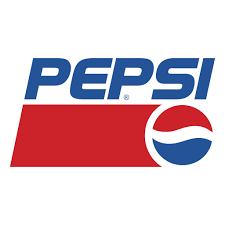Arthur Besse
cultural reviewer and dabbler in stylistic premonitions
- 395 Posts
- 971 Comments

 4·5 days ago
4·5 days agoWhen it’s libre software, we’re not banned from fixing it.
Signal is a company and a network service and a protocol and some libre software.
Anyone can modify the client software (though you can’t actually distribute modified versions via Apple’s iOS App Store, for reasons explained below) but if a 3rd party actually “fixed” the problems I’ve been talking about here then it really wouldn’t make any sense to call that Signal anymore because it would be a different (and incompatible) protocol.
Only Signal (the company) can approve of changes to Signal (the protocol and service).
Here is why forks of Signal for iOS, like most seemingly-GPLv3 software for iOS, cannot be distributed via the App Store
Apple does not distribute GPLv3-licensed binaries of iOS software. When they distribute binaries compiled from GPLv3-licensed source code, it is because they have received another license to distribute those binaries from the copyright holder(s).
The reason Apple does not distribute GPLv3-licensed binaries for iOS is because they cannot, because the way that iOS works inherently violates the “installation information” (aka anti-tivozation) clause of GPLv3: Apple requires users to agree to additional terms before they can run a modified version of a program, which is precisely what this clause of GPLv3 prohibits.
This is why, unlike the Android version of Signal, there are no forks of Signal for iOS.
The way to have the source code for an iOS program be GPLv3 licensed and actually be meaningfully forkable is to have a license exception like nextcloud/ios/COPYING.iOS. So far, at least, this allows Apple to distribute (non-GPLv3!) binaries of any future modified versions of the software which anyone might make. (Legal interpretations could change though, so, it is probably safer to pick a non-GPLv3 license if you’re starting a new iOS project and have a choice of licenses.)
Anyway, the reason Signal for iOS is GPLv3 and they do not do what NextCloud does here is because they only want to appear to be free/libre software - they do not actually want people to fork their software.
Only Signal (the company) is allowed to give Apple permission to distribute binaries to users. The rest of us have a GPLv3 license for the source code, but that does not let us distribute binaries to users via the distribution channel where nearly all iOS users get their software.

 12·5 days ago
12·5 days ago

 92·5 days ago
92·5 days agoDownvoted as you let them bait you. Escaping WhatsApp and Discord, anti-libre software, is more important.
I don’t know what you mean by “bait” here, but…
Escaping to a phone-number-requiring, centralized-on-Amazon, closed-source-server-having, marketed-to-activists, built-with-funding-from-Radio-Free-Asia (for the specific purpose of being used by people opposing governments which the US considers adversaries) service which makes downright dishonest claims of having a cryptographically-ensured inability to collect metadata? No thanks.
(fuck whatsapp and discord too, of course.)

 8·5 days ago
8·5 days agoit’s being answered in the github thread you linked
The answers there are only about the fact that it can be turned off and that by default clients will silently fall back to “unsealed sender”.
That does not say anything about the question of what attacks it is actually meant to prevent (assuming a user does “enable sealed sender indicators”).
This can be separated into two different questions:
- For an adversary who does not control the server, does sealed sender prevent any attacks? (which?)
- For an adversary who does control the server, how does sealed sender prevent that adversary from identifying the sender (via the fact that they must identify themselves to receive messages, and do so from the same IP address)?
The strongest possibly-true statement i can imagine about sealed sender’s utility is something like this:
For users who enable sealed sender indicators AND who are connecting to the internet from the same IP address as some other Signal users, from the perspective of an an adversary who controls the server, sealed sender increases the size of the set of possible senders for a given message from one to the number of other Signal users who were online from behind the same NAT gateway at the time the message was sent.
This is a vastly weaker claim than saying that “by design” Signal has no possibility of collecting any information at all besides the famous “date of registration and last time user was seen online” which Signal proponents often tout.

 75·5 days ago
75·5 days agoedit: it’s funny how people downvoting comments about signal’s sealed sender being a farce never even attempt to explain what its threat model is supposed to be. (meaning: what attacks, with which adversary capabilities specifically, is it designed to prevent?)

 9·5 days ago
9·5 days agophoto of China's lead negotiator upon finding out that the United States' primary demand is that China issue a statement praising Trump personally


 3·5 days ago
3·5 days agoYou can configure one or more of your profiles’ addresses to be a “business address” which means that when people contact you via it it will always create a new group automatically. Then you can (optionally, on a per-contact basis) add your other devices’ profiles to it (as can your contact with their other devices, after you make them an admin of the group).
It’s not the most obvious/intuitive system but it works well and imo this paradigm is actually better than most systems’ multi-device support in that you can see which device someone is sending from and you can choose to give different contacts access to a different subset of your devices than others.

 3·5 days ago
3·5 days agoYou can just make a group for each contact with all of your (and their) devices in it.

 245·5 days ago
245·5 days agoMessages are private on signal and they cannot be connected to you through sealed sender.
No. Signal’s sealed sender has an incoherent threat model and only protects against an honest server, and if the server is assumed to be honest then a “no logs” policy would be sufficient.
Sealed sender is complete security theater. And, just in case it is ever actually difficult for the server to infer who is who (eg, if there are many users behind the same NAT), the server can also simply turn it off and the client will silently fall back to “unsealed sender”. 🤡
The fact that they go to this much dishonest effort to convince people that they “can’t” exploit their massive centralized trove of activists’ metadata is a pretty strong indicator of one answer to OP’s question.

 7·7 days ago
7·7 days agothis is a good meme

 1·7 days ago
1·7 days agodeleted by creator
he followed up to simultaneously say he was joking while also doubling down 🤦


 9·9 days ago
9·9 days agoit’s among the many OSes you can run in an emulator in your web browser at https://copy.sh/v86/

 26·11 days ago
26·11 days agothat original tweet (archive) from February is now deleted; in case anyone wonders if it was because he reconsidered, no, 18 hours ago he reiterated it (archive).

 9·11 days ago
9·11 days agoThe network never went down.
You say that but, everything I ever posted on identica (and also on Evan’s later OStatus site
Status.Net, which i was a paying customer of) went 404 just a few years later. 😢When StatusNet shut down I was offered a MySQL dump, which is better than nothing for personal archival but not actually useful for setting up a new instance due to OStatus having DNS-based identity and lacking any concept for migrating to a new domain.
https://identi.ca/evan/note/6EZ4Jzp5RQaUsx5QzJtL4A notes that Evan’s own first post is “still visible on Identi.ca today, although the URL format changed a few years ago, and the redirect plugin stopped working a few years after that.” … but for whatever reason he decided that most accounts (those inactive over a year, iiuc, which I was because I had moved to using StatusNet instead of identica) weren’t worthy of migrating to his new pump.io architecture at all.
Here is some reporting about it from 2013: https://lwn.net/Articles/544347/
As an added bonus, to the extent that I can find some of my posts on archive.org, links in them were all automatically replaced (it was the style at the time) with redirects via Evan’s URL shortening service
ur1.cawhich is also now long-dead.
imo the deletion of most of the content in the proto-fediverse (PubSubHubbubiverse? 😂) was an enormous loss; I and many other people had years of great discussions on these sites which I wish we could revisit today.
🪦
The fact that ActivityPub now is still a thing where people must (be a sysadmin or) pick someone else’s domain to marry their online identity to is even more sad. ActivityPub desperately needs to become content addressable and decouple identity from other responsibilities. This experiment (which i learned of via this post) from six years ago seemed like a huge step in the right direction, but I don’t know if anyone is really working on solving these problems currently. 😢

 1·11 days ago
1·11 days agoLmao that my pedanticism could be perceived as BSD advocacy - fwiw, I primarily use GNU/Linux, I develop GPL-licensed software, and I think GPLv3 or AGPLv3 are good choices for many new projects starting today.
My opinions about the history and future of copyleft are somewhat complicated but I didn’t mention any opinions in the comment you’re replying to - I was just correcting your factual misunderstandings about the accepted definitions of these terms.
sometimes a footprint represents humanity
sometimes, but in GNOME’s case i think it is not intended to be a human foot but rather the foot of a mythological creature (a gnome). note that it has a squashed aspect ratio compared to a human foot, and also has only four toes.
apparently it’s also problematic in some cultures: https://wiki.gnome.org/Engagement/FootAndCulturalIssue
Extended explanation: I suspect the “back and forth” is likely a reference to the “poop back and forth” scene in Miranda July’s 2005 film Me and You and Everyone We Know.






















this guy knuths how units work